

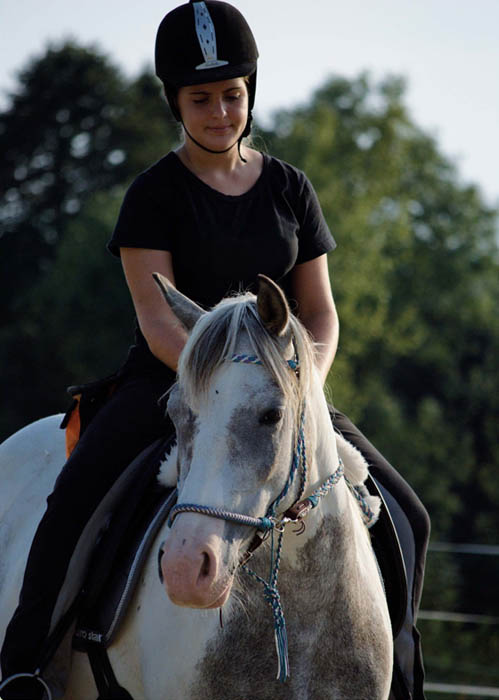
Marlitt Wendt
A quiet word
with your horse
Learning by reward –
The key to motivation and trust

Imprint
Copyright@ 2012 Cadmos Publishing Limited, Richmond, UK
Copyright of the original edition ©2011 by Cadmos Verlag, Schwarzenbek
Design: Ravenstein + Partner, Verden
Setting: Das Agenturhaus, Munich
Editor of the original edition: Anneke Bosse
Editor of this edition: Christopher Long
Printed by: Grafisches Centrum Cuno, Calbe
E-Book conversion: Satzweiss.com Print Web Software GmbH
Cover photo: Stephen Rasche-Hilpert
Content photos: Cornelia Ranz
Translation: Claire Williams
Printed by: Grafisches Centrum Cuno, Calbe
All rights reserved: No part of this book may be reprinted or reproduced or utilized in any form or by any electronic, mechanical, or other means, now known or hereafter invented, including photocopying and recording, or in any information storage or retrieval system, without permission in writing from the publisher.
British Library Cataloguing in Publication Data
A catalogue record of this book is available from the British Library
Printed in Germany
ISBN 978-0-85788-007-9
eISBN 978-0-85788-728-3 (EPUB)
eISBN 978-0-85788-729-0 (MOBI)
www.cadmos.co.uk
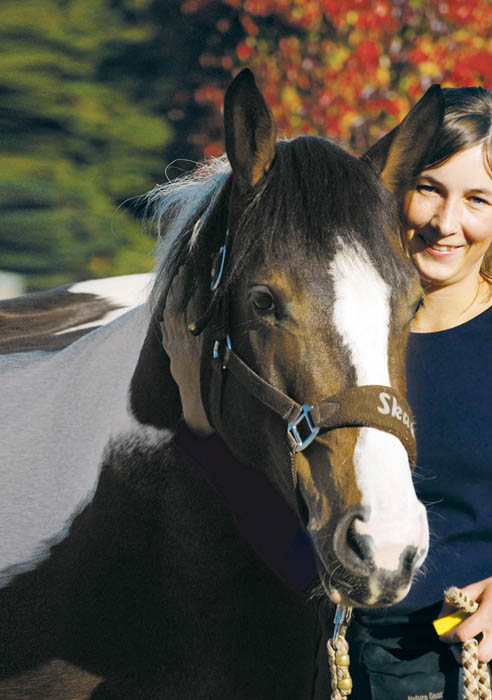

Foreword: beginning a dialogue
8
Many horse lovers spend the majority of their free time with their horses. The relationship that develops out of this is like a dance, a two-way communication between you and your four-legged partner, which is fed into by the empathy that you have for your horse’s feelings and an understanding of how it moves. When training horses it is essential to choose a method that is suited to both human and horse, so that as well as the dance steps you learn the essence of the dancing style. When the first basic steps and the background to the dance have been mastered, you can think about adding steps and combinations, or even advanced movements or improvisation, just as in dancing.
The basis for training horses positively is the horse’s own learning behaviour and psyche. Only a person who understands why and how a horse behaves and thinks can truly open a dialogue with one. It is only then that we can start to work on our own dancing ability and start to refine our own technique.
The exercises introduced in this book are practical examples of what a training programme may look like. The emphasis is on the word “may”, because of course every single part of training must be tailored to the ability of the individual horse. There is no guaranteed method and it is only through empathy and an understanding of the way a horse’s mind works that we can achieve success together.
Our pursuit of technical perfection all too often distracts us from what is actually important on a daily basis – the joy of working together and the emotional balance of horse and rider. Whether on the dance floor or in the arena, a contented way of going and an expression of inner balance are the rewards for horse and rider of treating each other with respect. Given that every person and every horse is different, you must find out for yourself the form that your own personal dialogue needs to take to communicate with your horse.
 August 2011
August 2011
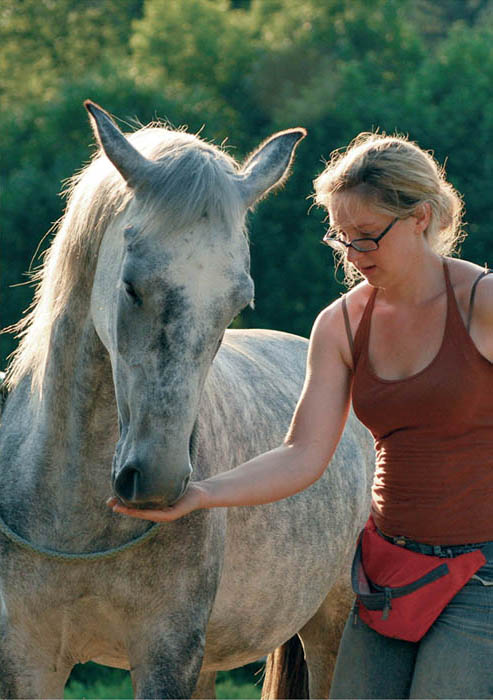
There is another way –
a question of feeling
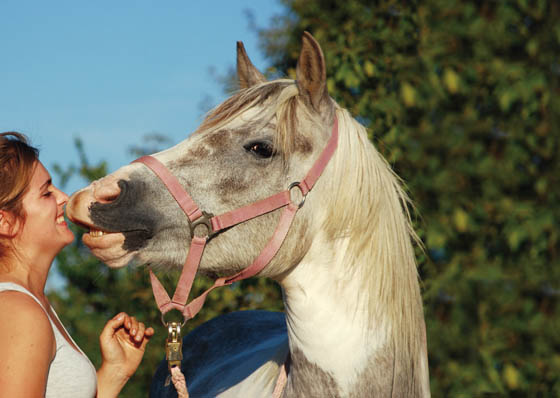
11
Why do so many riders invest their valuable free time carrying out boring exercises with their horses, and then complain about how badly their horses are going? They often resort to the more forceful means demanded by many of the traditional methods of training, while at the same time feeling anything but happy. Isn’t this rather different from how we imagined riding would be? We wanted to have fun, enjoy the great outdoors with our horses, be free from worry and really become one with our horse. What, more often than not, is left of this dream? Nothing but a feeling of wanting to achieve more than you can, of not being good enough, made worse by social pressure placed on you by others in your yard. In other words you become frustrated. Does it really have to be like this? Can you really train horses only by methods that use force and pressure? I can assure you that this is not the case. The training of horses and the time we spend together with these wonderful creatures doesn’t need to be like this. There is another way.
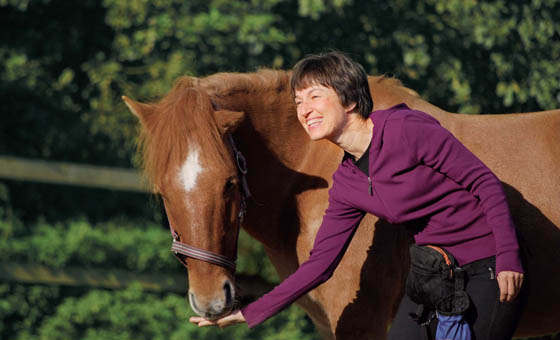
You and your horse will learn best in a relaxed atmosphere.
12
It’s a self-fulfilling prophecy that riding and training horses leads to work. We know this from many of the common things we do, such as ground work, training in-hand and riding lessons. The time we spend with our horses tends to be characterised by an atmosphere of hard work and we have a clear idea in our minds of what we have to achieve. At the same time, though, work is often perceived as something that is far from being fun. Given that the work we are doing involves learning certain movements or is designed to train our horses and make them supple, it can’t possibly also be fun for either horse or rider. Or can it? Does it really have to be like this?
13
Think back to a time in your life when you were relaxed and having fun, such as when you were on a particularly enjoyable holiday. You are likely to be able to remember lots of minute details, such as the sea glinting in the distance, the exotic smells and the different types of food you ate. In retrospect the holiday will appear to be much longer than perhaps it really was; the days will be filled with different activities and lots of apparently insignificant details, all of which will have been burned firmly into your memory. This is precisely because you don’t feel as though you actually had to learn or remember anything. Learning, and with it the memory of the smallest detail, was in effect a by-product of the experience. They fact that you can remember so much occurred totally accidentally, without you being aware of it or even desiring it.
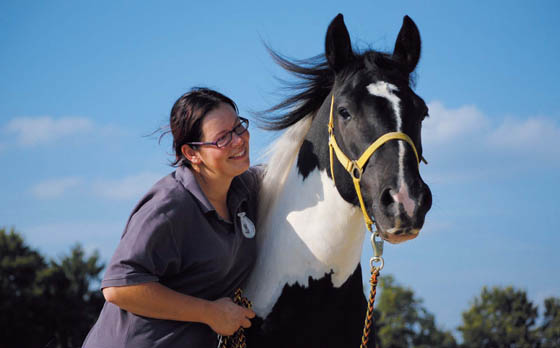
Training can also be done without pressure.
Just as we can save memories of good experiences quite accidentally, our horses can learn through enjoyment, and be happy when doing so. To do this we must rid ourselves of the notion of wanting to teach horses something. This transition from being superior, a teacher, to taking amore equal position of learning together brings with it a change in perspective. Remember that horses are perfect just the way they are; we have to learn to make ourselves understood and teach ourselves how to communicate with them. Every training method is based on certain assumptions, and on a specific belief system upon which the followers of the method have agreed. People often talk at cross purposes – one person might assume that the Earth is flat, with the Sun and the stars revolving above it, while the other sees the Earth as round with the Sun circling around it. Their views of the world and the reality that they portray are fundamentally different, but each believes that their view is the most valid one.
14
In most of the current training methods, the underlying belief system is based on the assumption that the horse has to be taught specific things, and that this teaching has something to do with a relationship that involves dominance, in the form of a hierarchy. The horse is taught to react to the deliberate application and release of pressure. The horse has to submit itself unconditionally to the demands of its rider, and self-initiative is not encouraged. If we, as riders, don’t feel comfortable within this belief system, perhaps because it doesn’t reflect our own ideas and we don’t want to or can’t identify with the way horses are treated as a result, then we will not gain any real enjoyment from our horses.
In general, traditions have left their mark on equestrianism, as have the personal observations and opinions of many well-known horsemen and women. The method of training horses introduced in this book is based less on tradition and more on scientific knowledge of the psychology of learning and the basics of behavioural science. For this reason I will be assuming the following definitions and theories, which come from the scientific study of animal behaviour (ethology), and which I will clarify and explain throughout the book.
• Horses learn constantly and they do so from every situation.
• There is no such thing as non-communication.
• Learning is an individual process and has nothing to do with hierarchy.
• Signals are not orders.
• People are not essentially brighter than horses, but they just have a different type of intelligence.
• You can train without using pressure.
Every belief system will have its own specific effect on the psyche of the person who follows it. If we view our horse as a working animal, such as in the cowboy tradition, it will be difficult for us to build play into our training rather than putting absolute obedience to the fore. An alternative vision of training would be to concentrate on the “we”, and to put the horse’s enjoyment to the fore by allowing it to volunteer its work. In the case of “we” it is the feeling of mutual understanding that will fill both horse and human with enthusiasm, and our horses will reward us with increased levels of attention and their open curiosity for what will become a mutual hobby.
15
Every rider and horse lover should think about what the natural rights of a horse actually are. Under our animal welfare laws, every animal has the right to be kept in away that is appropriate for its species. This includes being fed and housed appropriately, and in my opinion a horse also has the right to be treated and trained in a humane and ethically correct manner. You should, whenever possible, try to achieve your training goals without the use of methods that involve pressure or physical force. Remember that psychological pressure is a form of force that should not be underestimated. Aids or signals given by a rider are not orders, but rather requests made of the horse. Given that you are entering into a dialogue with your horse, it should be given the opportunity to comment and have its viewpoint considered. Of course there will be times when we have to be able to control a horse’s behaviour in order not to endanger others, but this should not be the sole basis for training, as is often taught. Therefore you must differentiate between training sessions during which the horse is given the opportunity to learn without fear of pressure or punishment and those that have to involve exceptions to this rule.
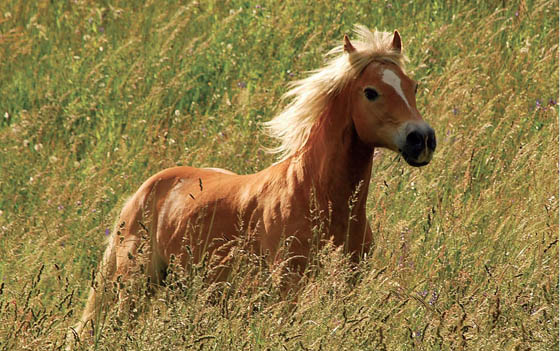
Every horse has the right to be treated and kept in a way that is fair and appropriate.
16
It is sometimes difficult to change the way things are done when you are part of a social system that is as influenced by tradition as the equestrian world. There are firm views and opinions like: “We have always done it like that”, or even “If you don’t make it do it then your horse will walk all over you”. If you attempt to break out of this straitjacket of expectations, even slightly, then you could be quickly shunned – at best you will be avoided or made fun of, at worst you may face open hostility. However, to achieve your and your horse’s happiness there is no other option than to follow your own dream of how you imagine your time together can be. Would you like to be treated the same way as a horse often is during a riding lesson? If not, then the question has to be asked whether you can ever be truly happy with the traditional way in which riding is taught and horses are trained. If we take advantage of our own human right to live our life the way we feel we should be able to, then the time we spend with our horses should also be one in which can do as we wish and find enjoyment.
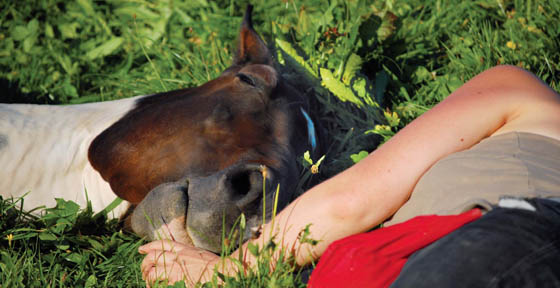
Live the same dream together.
17
There is naturally a long process of learning, observing and gathering experience before you reach a stage at which you are completely at ease working and being with your horse. Both horses and people are complex living beings; to understand them requires a certain level of knowledge and practice. Once you are comfortable being around and working with your horse, you will need to tackle the idea of establishing a goal-orientated system of training. Only those who follow a plan and understand what this plan consists of will ever achieve what they want to in terms of training their horses. In this respect, every training method is only as good as the trainer. The positive training system that I introduce here is a complex method and one that has to be studied in order for it to be successful. Although the foundation of positive horse training lies in taking a playful approach and creating a relaxed training atmosphere, this apparent lightness in approach should never be confused with inconsistency or laxness, or even an anti-authoritarian teaching process. When you are trying to establish a new form of communication with your horse, a high degree of consistency and self-analysis is required, together with a well-structured training programme. In addition, knowledge of how learning occurs and the behavioural patterns of both horse and human is crucial. This new philosophy of working together and respecting your horse demands a high level of concentration and consistency from all of those involved; in return you will gain a fascinating insight into how your four-legged partners see the world and into their mental capacity, which may so far have been unknown to you. If you are prepared to really open yourself up to carrying out a serious dialogue with your horse this unconventional partnership will offer you many new experiences and enjoyable moments.
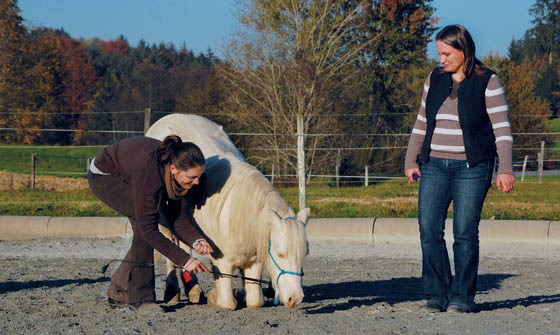
Before you can enter into a dialogue, you must agree on the language to be spoken.